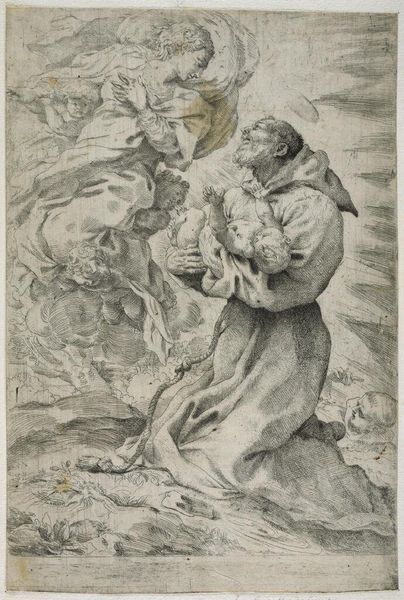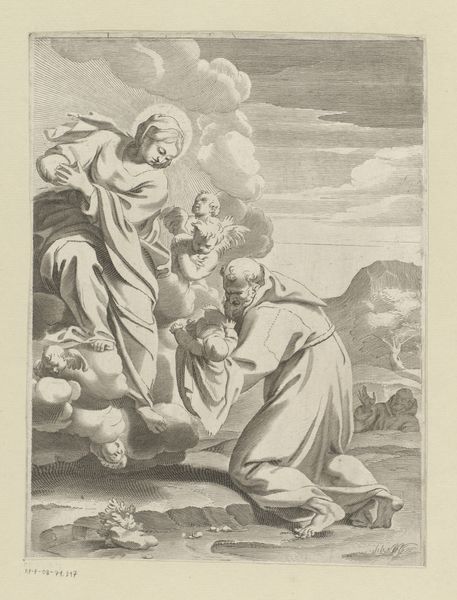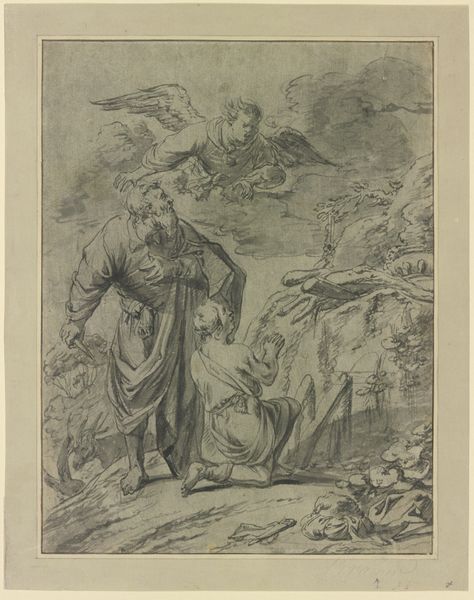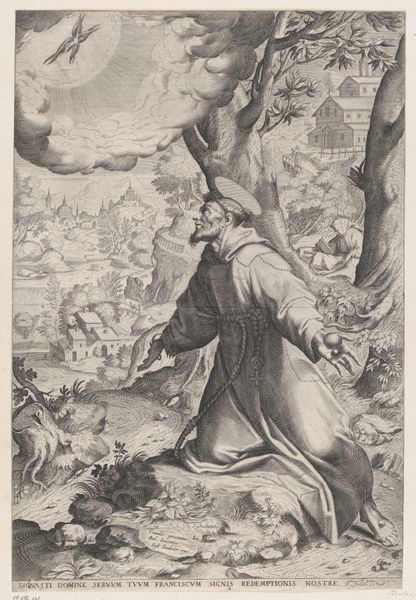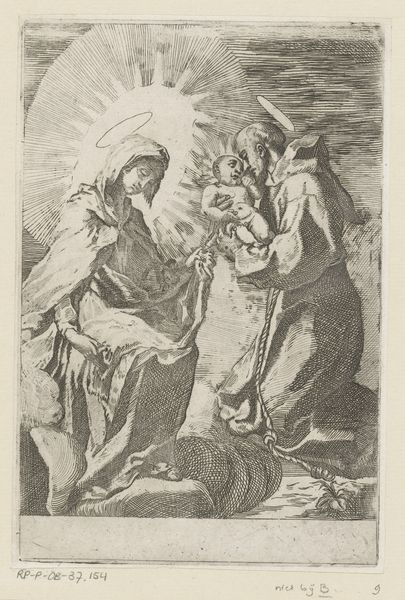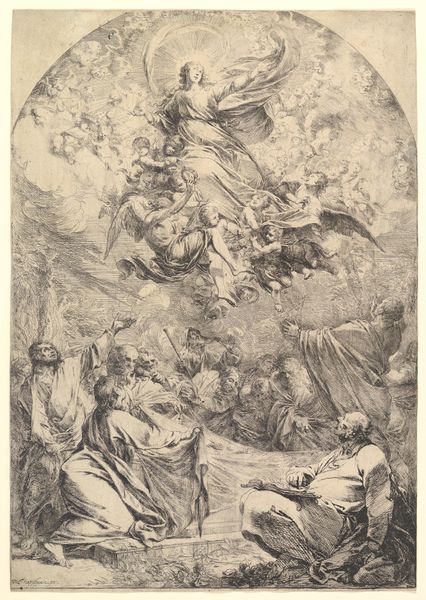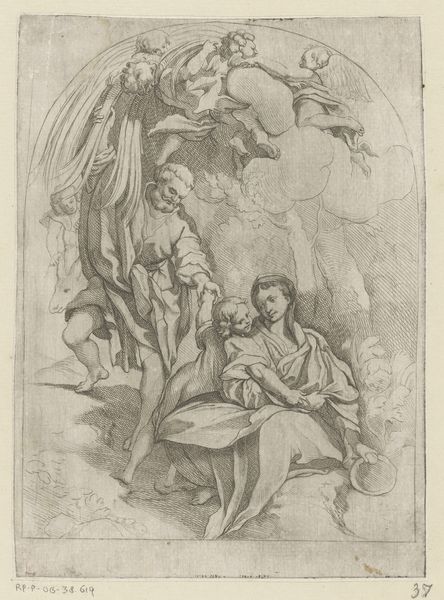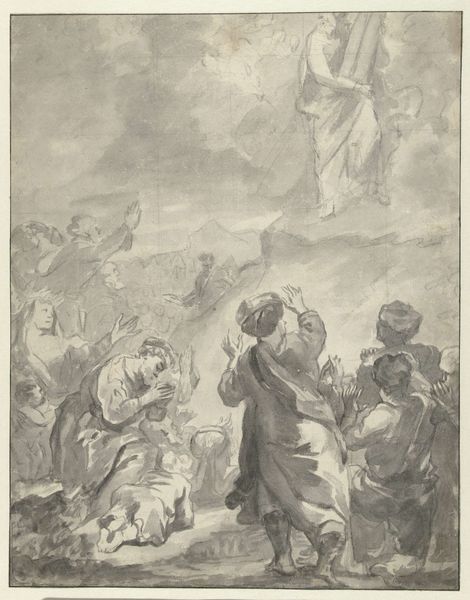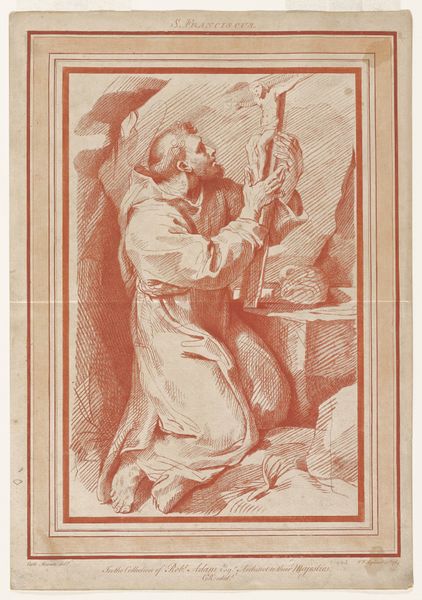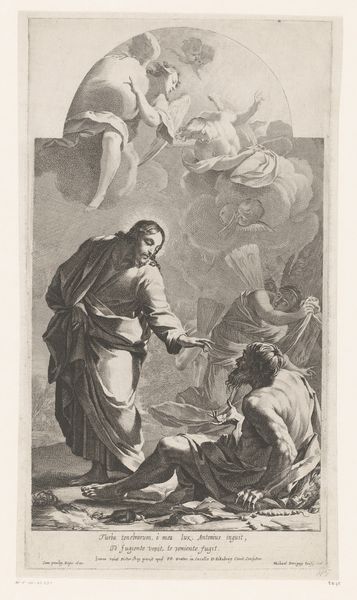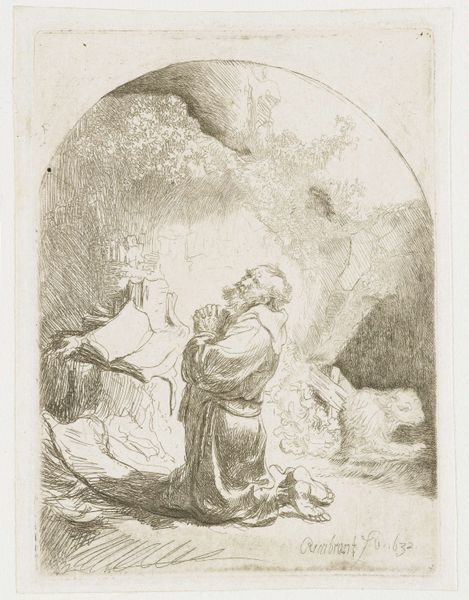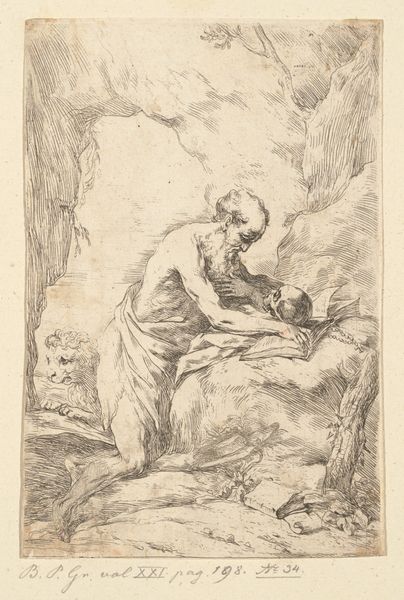
drawing, print, etching, ink, engraving
#
portrait
#
drawing
# print
#
etching
#
charcoal drawing
#
mannerism
#
ink
#
pencil drawing
#
portrait drawing
#
engraving
Copyright: National Gallery of Art: CC0 1.0
Editor: This is "Saint Francis with the Christ Child" by Pietro Faccini, made sometime between 1562 and 1602. It's an etching, so a print made with ink on, presumably, paper. The overall impression is very delicate but also incredibly dynamic. The lines seem to swirl around the figures. How do we understand its historical significance? Curator: This piece operates within a fascinating period of religious and artistic tension. We see the influence of Mannerism, a style known for its artifice and drama, clashing with the rising fervor of the Counter-Reformation, which emphasized direct emotional engagement with religious subjects. Notice how Saint Francis isn't depicted in a serene, idealized manner, but rather with a sense of intense, almost ecstatic devotion. Editor: Yes, his expression is really striking. I mean, you see similar compositions of the Madonna and Child all the time, but this feels different. More raw, somehow. Curator: Precisely. Consider the role of prints at this time. They weren't just artworks; they were powerful tools for disseminating religious ideas and imagery. By depicting Saint Francis in such an emotionally charged way, Faccini is tapping into a broader cultural desire for more personal and immediate spiritual experiences. It reflects the anxieties and passions that defined the era. Think about who the intended audience for a print like this might be. Editor: So it’s about more than just portraying a saint; it's about conveying a specific kind of religious feeling to a wider audience. Does this connect to larger shifts in power dynamics? Like, between the church and the people? Curator: Absolutely. The rise of print culture allowed for a more decentralized distribution of images and ideas, challenging the Church's control over visual representation and religious interpretation. This print of St. Francis is not just devotional art. It's a sign of how religious expression and identity were evolving in a changing world. Editor: That’s amazing. I never thought about prints having such a socio-political role back then. Curator: Indeed, understanding art within its historical context reveals much about how people lived, believed, and struggled. Editor: This really opened my eyes to a completely new dimension of understanding this work, I’ll never look at prints the same way again!
Comments
No comments
Be the first to comment and join the conversation on the ultimate creative platform.
